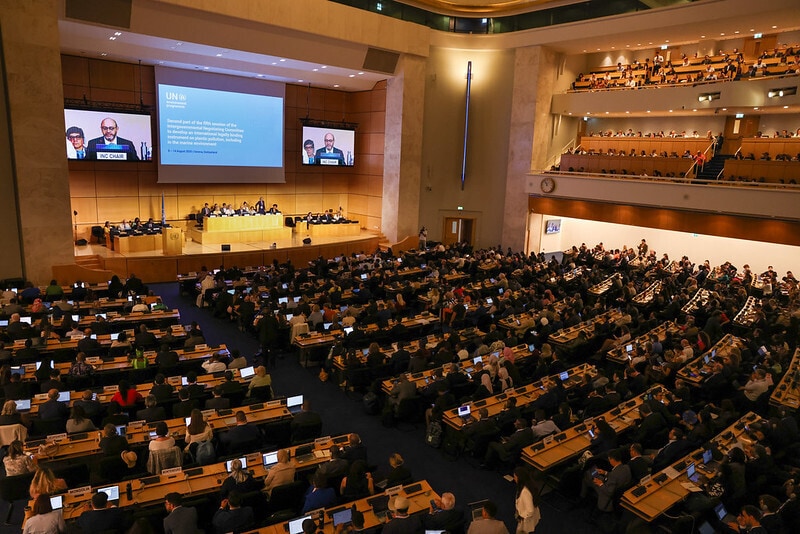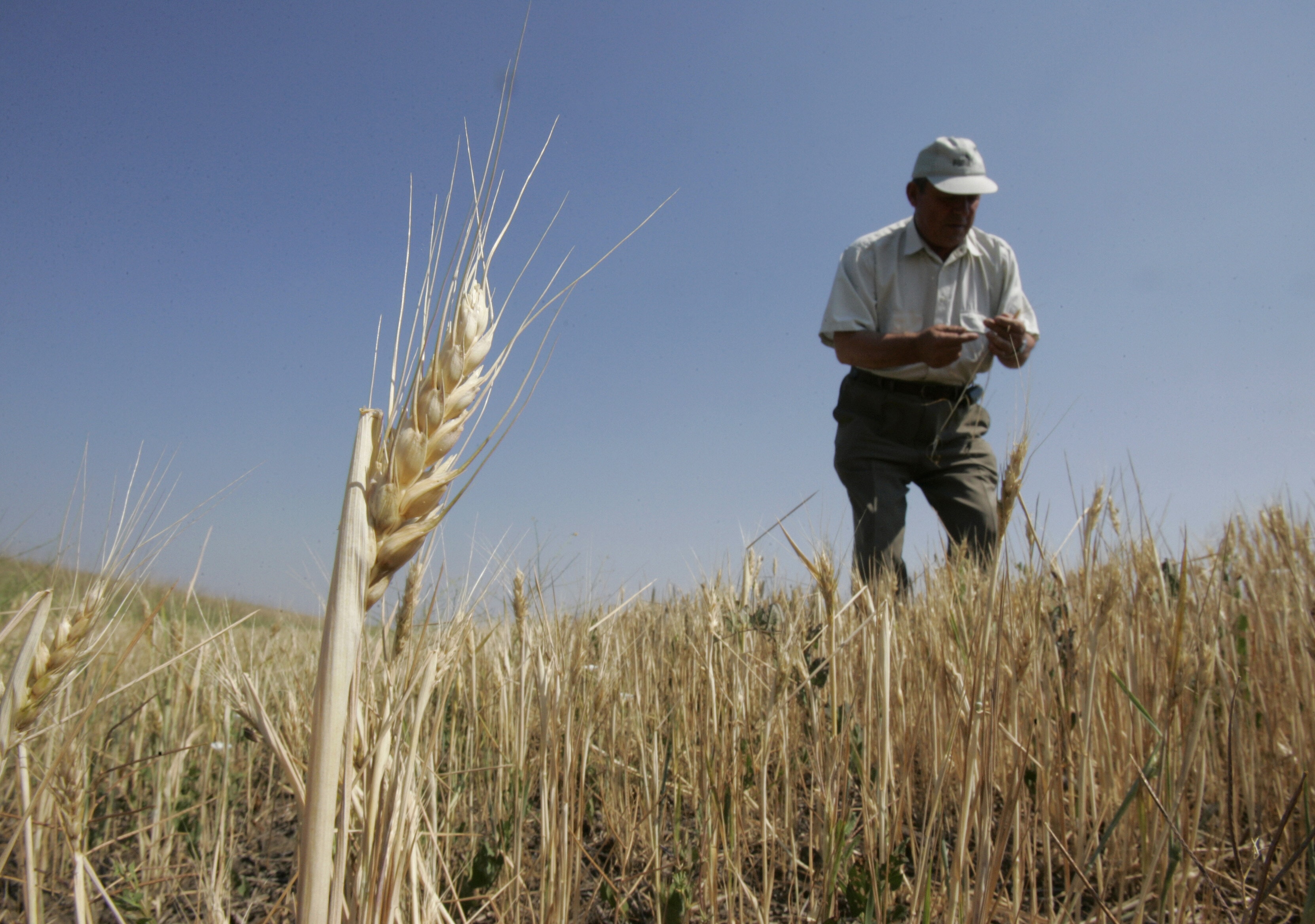Opinion
Why forest restoration needs a 100-year plan and Indigenous multi-gen leadership

Multi-generational leadership is essential to ensuring the longevity and impact of forest restoration initiatives.
Image: Global Forest Generation
Stay up to date:
Climate and Nature
- A 100-year vision in ecosystem restoration is vital as real and sustainable change in forest restoration requires long-term commitment and vision beyond quick fixes.
- The long-term approach addresses carbon capture and fosters biodiversity, water security and cultural preservation, respecting forests' immense ecological, cultural and spiritual value.
- Projects like Acción Andina embrace local and indigenous community-led efforts and their ancestral knowledge and practices as key to achieving large-scale reforestation and conservation goals.
Forests are valuable beyond their ability to capture carbon and debates about whether we should plant trees or protect them reflect an either-or mentality that can stall transformative solutions. The complexity and interconnectedness of forest ecosystems demand a long-term perspective and management approach guided by ancestral ecological knowledge and multi-generational leadership.
In geographies like the high Andes of South America, where Global Forest Generation is developing our first multi-country ecosystem restoration initiative, Acción Andina, a 100-year vision is not merely a symbolic time frame. It may be the minimum period needed for these unique, slow-growing, vast forest ecosystems to heal fully.
Additionally, creating and sustaining the right partnerships in support of ecosystem regeneration – across governments, economies, political systems and local communities – will require ongoing commitment. Of course, a long-term vision is not limited to the Andes and should be applied globally to nurture widespread, sustainable restoration movements.
The case for a 100-year vision
The benefit of a 100-year vision is that it begins with an assumption of success, allowing us to imagine how something can and will be done rather than debating whether it’s possible. It counters the myth that we can easily and quickly return what took millennia to create.
Valuing forests only as vessels for carbon storage reinforces the often reductionist and transactional thinking that got us here in the first place. Forests are part of an intricate ecosystem with immeasurable ecological, cultural and spiritual benefits. They are home to most of the planet’s terrestrial wildlife and support cultures worldwide.
Moreover, they are beautiful and provide an opportunity to commune with nature. By committing to a century-long view, we honour the complex processes of ecological recovery and acknowledge the enduring impact of our actions on future generations.
A model for the movement
Our 100-year vision began with the Andes, home to 70% of the world’s tropical glaciers, crucial for the biodiversity of regions like the Amazon but threatened by rapid melting. Centuries of deforestation and grazing post-European colonization have reduced native Polylepis forests to a mere 1-3% of their original size. Freshwater captured by these high-mountain forests protects against drought and helps to supply water for millions of people downstream.
Acción Andina, drawing inspiration from the community-led reforestation efforts of Asociación Ecosistemas Andinos, co-founded by indigenous leader Constantino Aucca 25 years ago, has since 2018, expanded these efforts across the 7,000-kilometre-long Andean range in partnership with Global Forest Generation.
This initiative unites local leaders and communities that are highly motivated to reforest their mountains. They understand the importance of reforestation for water security, their children, and future generations. A crucial part of Acción Andina is working with these communities to protect freshwater resources for the drastic century to come.
Harnessing ancestral knowledge
Historically, local and indigenous communities have shown a profound understanding of sustainable land management. Lands tended to by indigenous communities support global carbon and biodiversity targets and are degrading more slowly than other areas. Efforts like Acción Andina and Regreening Africa demonstrate the effectiveness of engaging these communities to ensure interventions such as reforestation and water conservation are culturally appropriate and meet local needs.
As President of Acción Andina, Aucca has inspired indigenous communities to reconnect with the ancestral Incan principles of “Ayni and Minka,” a commitment to work together for the common good. It’s incredible to see these ancestral principles at work. Hundreds of people of all ages, in traditional dress, many with babies on their backs, come together from neighbouring communities, climbing steep slopes in harsh conditions to plant tens of thousands of trees in a single day.
Local communities are not just the beneficiaries of restoration. Their leadership is indispensable for success and we should learn from those who truly live the work of generational restoration.
Accept our marketing cookies to access this content.
These cookies are currently disabled in your browser.
Multi-generational leadership
Furthermore, multi-generational leadership is essential to ensuring the longevity and impact of forest restoration initiatives. That means creating institutional knowledge that transcends individual lifetimes or a single leader. We will need generations of passionate changemakers to build an unprecedented restoration workforce, meaning most of our leaders have yet to be born. Passing down the Ayni and Minka mindset of communal work is critical to enabling real change.
Acción Andina’s on-the-ground leaders are examples of a rewarding intergenerational collaboration. Like a forest, with trees of different ages coexisting and creating a richer, more resilient whole, Acción Andina brings together seasoned leaders with younger partners. Together, they share knowledge and ensure the continuity of conservation and restoration projects.
Replicating success on a global scale
Since its inception in 2018, Acción Andina’s community-led restoration initiative has become one of South America’s largest, with 22 partner organizations and an estimated 30,000 people planting 10 million trees. Winning the Earthshot Prize in 2023 and recognition by the United Nations as a World Restoration Flagship in 2024 validate our belief in combining ancestral knowledge with a multi-generational approach to healthy forests.
This approach, shown to be effective by other flagships like Terai Arc Landscape in Nepal – where local communities with governments have protected and restored almost 67,000 hectares of forest in Nepal – and Living Indus in Pakistan, which connects local communities and NGOs to revive Pakistan’s Indus Basin, is crucial for ecosystem restoration on the necessary scale to combat climate change.
Planting trees transcends carbon offsetting; it’s an act of hope for future life. While forests alone won’t solve the climate crisis, prioritizing long-term resilience over quick fixes is vital for addressing the impacts we’ll face this century.
Despite the challenges of ecosystem regeneration and the pull of competing interests, envisioning a world where self-preservation motivates the majority to conserve nature is crucial.
Our 100-year vision compels us to confront significant questions about our planet’s future, the steps for restoration, and our role in it. These questions, essential in the face of overwhelming stakes, demand optimism and action.
Don't miss any update on this topic
Create a free account and access your personalized content collection with our latest publications and analyses.
License and Republishing
World Economic Forum articles may be republished in accordance with the Creative Commons Attribution-NonCommercial-NoDerivatives 4.0 International Public License, and in accordance with our Terms of Use.
The views expressed in this article are those of the author alone and not the World Economic Forum.
Forum Stories newsletter
Bringing you weekly curated insights and analysis on the global issues that matter.
More on Nature and BiodiversitySee all
David Elliott
August 27, 2025
Tom Crowfoot
August 20, 2025
Chavalit Frederick Tsao
August 19, 2025
Andrea Willige
August 15, 2025
Tom Crowfoot
August 14, 2025





